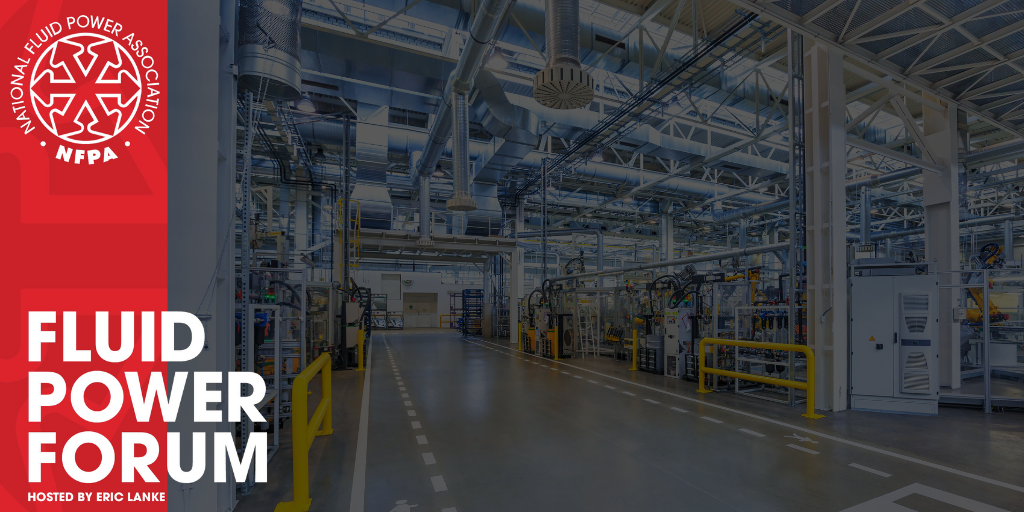As part of an effort to bring more information about the regulatory and legal environment facing American manufacturers, NFPA is monitoring the newsfeed of the National Association of Manufacturers (NAM) and will be bringing important updates like this to the attention of NFPA members.
The NAM recently launched “Manufacturing Wins,” the manufacturing industry’s campaign to preserve the benefits of the 2017 tax reforms that are currently scheduled to disappear in 2025—particularly those tax incentives that make it easier for small manufacturers to hire employees and raise wages, invest in equipment, grow their businesses and contribute more to their communities.
NAM Vice President of Domestic Policy Charles Crain explains what’s at stake in 2025.
Q: Manufacturers are facing “tax Armageddon” at the end of 2025. Can you explain what’s happening?
Crain: Tax reform in 2017 was rocket fuel for manufacturers, leading to record job creation, capital investment and economic growth. For example, manufacturing production grew 2.7% in 2018, with December 2018 being the best month for manufacturing output since May 2008. Manufacturing capital spending grew 4.5% and 5.7% in 2018 and 2019, respectively—this shows the direct impact of pro-growth tax incentives on manufacturers investing in new equipment and facilities. But many of tax reform’s pro-manufacturing provisions will expire at the end of 2025. If these provisions are allowed to expire, virtually every manufacturer will face devastating tax increases.
Q: What policies will sunset in 2025, and how will their expiration impact SMMs?
Crain: For small manufacturers organized as pass-throughs—meaning the business’s owners pay tax on the business’s income on their personal returns—two key changes are coming down the pike. First, their tax rate will increase, from 37% to 39.6%. Second, they will lose the pass-through deduction, which provides a tax deduction equal to 20% of the business’s income. In combination, these tax hikes will increase pass-throughs’ effective tax rate by at least 10 percentage points (from 29.6% to 39.6%), resulting in significantly less capital available for equipment purchases, job creation and community investment.
For small manufacturers organized as corporations, the NAM is fighting to prevent any increases in the corporate tax rate. The corporate rate decreased from 35% to 21% in 2017 and is not scheduled to expire—but President Joe Biden has proposed increasing the rate to 28%. The NAM remains staunchly opposed to corporate tax rate increases that punish manufacturers for investing and creating jobs here in America.
For family-owned small manufacturers, their estate tax obligations are scheduled to increase. Tax reform doubled the value of assets that can be passed on without incurring the estate tax; at the end of 2025, the estate tax exemption threshold is scheduled to be reduced by half. The NAM is calling on Congress to maintain the increased exemption—or to repeal the estate tax entirely, preventing family-owned businesses from being sold for parts to pay a tax bill when a loved one passes away.
Q: What else is at stake in 2025?
Crain: Manufacturers of all sizes continue to face uncertainty about the tax code’s treatment of R&D expenses, capital equipment purchases and interest on business loans. Immediate R&D expensing—which allows manufacturers to write off the entire cost of R&D spending in the year incurred—expired in 2022. So did a tax reform provision that allowed businesses to deduct more of the interest they pay on loans when they debt finance a project. And in 2023, 100% accelerated depreciation—which reduces the cost of capital equipment purchases—began to phase down. These expired provisions are vital to manufacturing growth, and the NAM is working to restore and extend them as Congress prepares for the 2025 tax fight.
Recent Posts
Q1-Q3 2024 US Trade Data Updated: Mexico Dominates Fluid Power Trade with US
The first three quarters of USITC 2024 data have been released, revealing how it has been measuring up to last year’s US import and export levels of fluid power products. US fluid power exports are on course finishing the year with a growth rate whereas fluid power imports to the US are behind schedule. 2023-dollar…
NAM Regulatory Update: Small Manufacturers: Congress Must Restore Full Expensing
As part of an effort to bring more information about the regulatory and legal environment facing American manufacturers, NFPA is monitoring the newsfeed of the National Association of Manufacturers (NAM) and will be bringing important updates like this to the attention of NFPA members. (October 17, 2024) As part of the NAM’s “Manufacturing Wins” tax…
Breaking the Mold: Inspiring Paths to Leadership in the Fluid Power Industry
This episode of Fluid Power Forum features Jeff Behling, President and CEO of STAUFF Corporation. Listen to the Podcast Here Jeff’s journey from the shop floor to the executive suite is a testament to the power of perseverance, continuous learning, and seizing opportunities. His story is relevant not just because of his unique background but…



